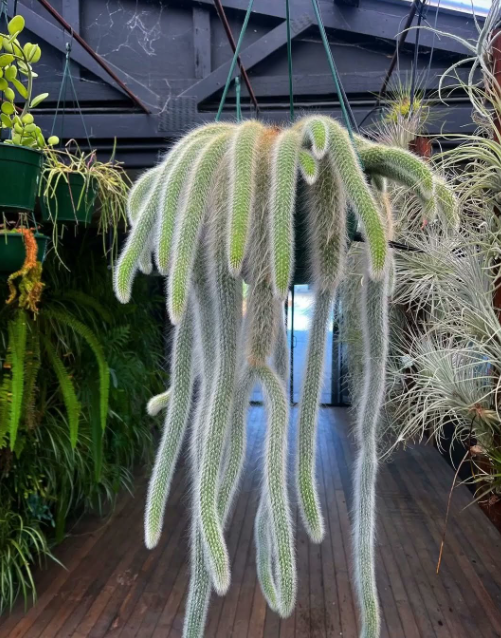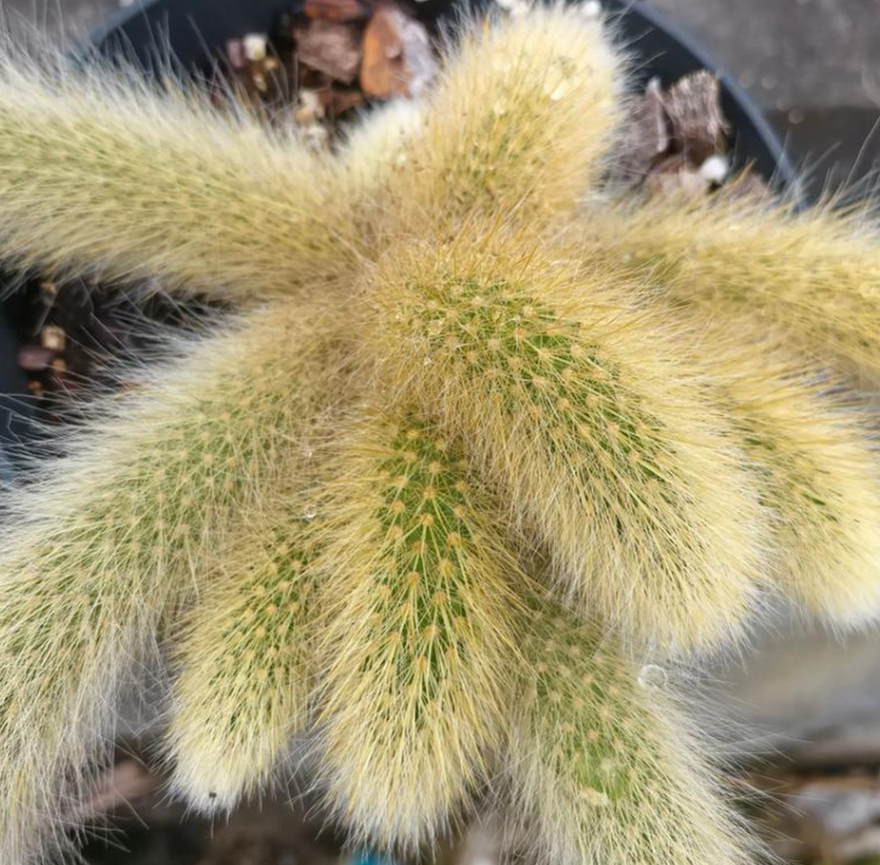Monkey Tail Cactus Hanging
Cleistocactus colademononis
SKU : MPS01356
99 AED
Inc.Vat.png)
Watering

fertilizer

temperature

sunlight



Cleistocactus colademononis
SKU : MPS01356
.png)
Watering

fertilizer

temperature

sunlight
The Monkey Tail Cactus (scientific name: Cleistocactus strausii) is a distinctive and fascinating cactus species, renowned for its unusual appearance and dramatic hanging growth habit. Here’s a detailed description of the plant:
General Appearance:
Growth Habit: The Monkey Tail Cactus has a long, trailing, and somewhat pendulous growth form, which makes it an excellent hanging plant. Its stems can grow up to 3–4 feet (1–1.2 meters) long, creating a cascading effect that is highly decorative.
Stems: The stems are cylindrical, segmented, and covered in dense, hair-like spines that give it the "monkey tail" appearance. These spines are typically white or light yellow and create a fuzzy, soft texture, which contrasts with the plant's spiny nature.
Color: The stems themselves are typically light green or grayish-green, with a smooth and somewhat fleshy texture.
Spines:
One of the most distinctive features of the Monkey Tail Cactus is its dense covering of soft, white, or yellowish spines, which resemble fur or hair. These spines give the cactus its "monkey tail" look, making it instantly recognizable.
The spines are not as sharp as those of other cacti, so they are less likely to cause injury, but they can still be irritating if handled roughly.
Flowers:
Shape and Color: The Monkey Tail Cactus produces stunning, bright red or orange tubular flowers that are about 2–3 inches (5–7 cm) long. The flowers bloom in spring or early summer and emerge from the areoles (the small bumps on the cactus surface) near the tips of the stems.
Blooming Habit: The flowers are often seen in clusters at the ends of the stems, creating a striking contrast against the fuzzy, green stems.
Fragrance: The flowers are mildly fragrant, but their beauty is their most notable feature.
Fruit:
After flowering, the cactus may produce small, red fruits, although these are less commonly seen in cultivation.